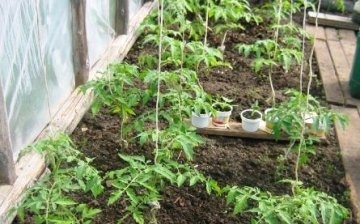Then plant tomatoes and other vegetables?
To get good yields from your summer cottage, it is important to correctly alternate planting crops, to follow the rules of crop rotation. Many crops can grow in one place for years, for example, nightshades, others require a change of beds literally every year. For all vegetable crops, with the exception of salad, onions, cabbage, cucumber, peas, beans, and garlic are good predecessors. But planting these crops themselves in one place for two seasons in a row is not recommended.
After plants with a deep root system, root crops are planted, and after tops, roots are planted. Tomatoes, like potatoes, can grow for a long time in one place, especially if organic fertilizers are applied every year during planting and in autumn. But it is still not infinite, since diseases gradually accumulate and deplete the earth. If your tomatoes began to give poor yields or, even worse, they picked up phytophthora, they will have to look for a new place, and if they grew in a greenhouse, then move the greenhouse. Then plant the tomatoes? The most preferred precursors are legumes, cabbage, onions, garlic, carrots, cucumbers, pumpkin.
In no case should you plant tomato seedlings in the beds where other nightshades previously grew: potatoes, peppers, eggplants. They are affected by the same pests and suffer from the same diseases. If your garden is very small, and there is no way to observe the correct crop rotation, and the question, after which to plant tomatoes, is relevant, sow green manures after harvesting in any garden bed, dig them up before winter and plant tomatoes in this place.



